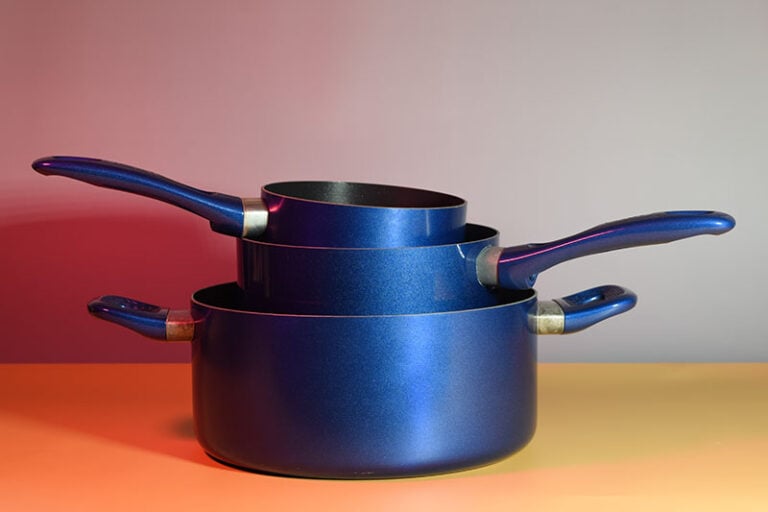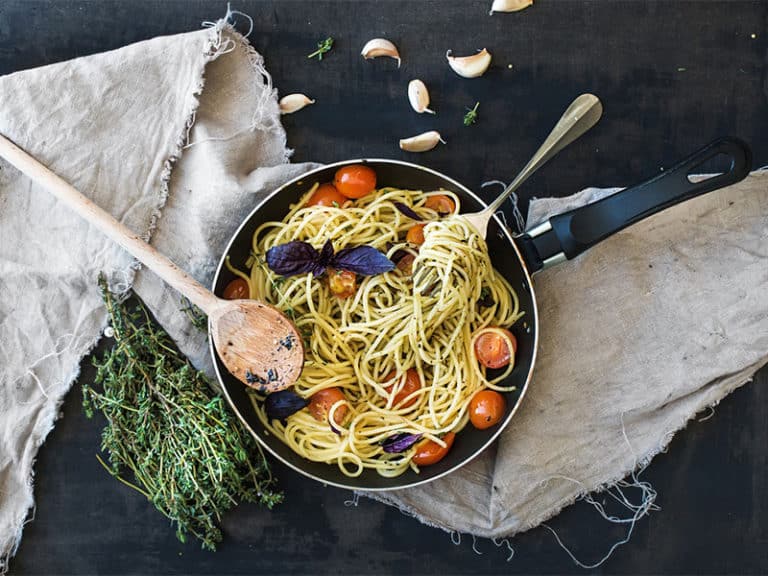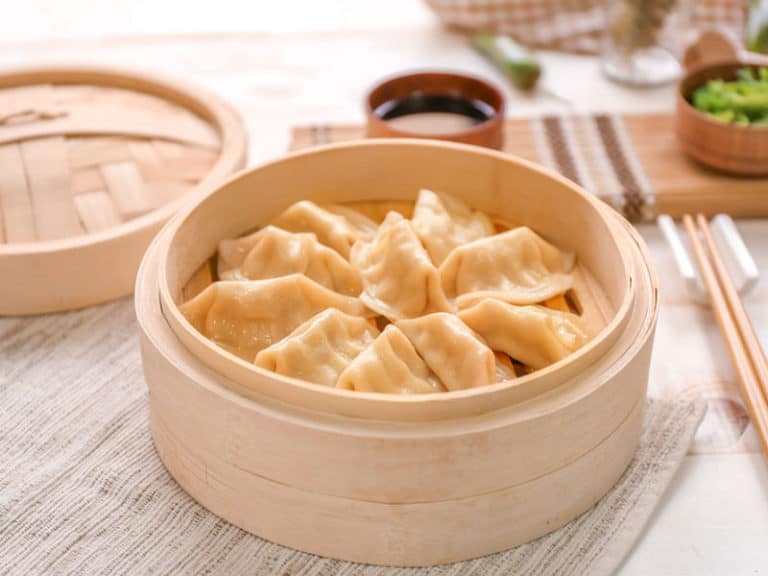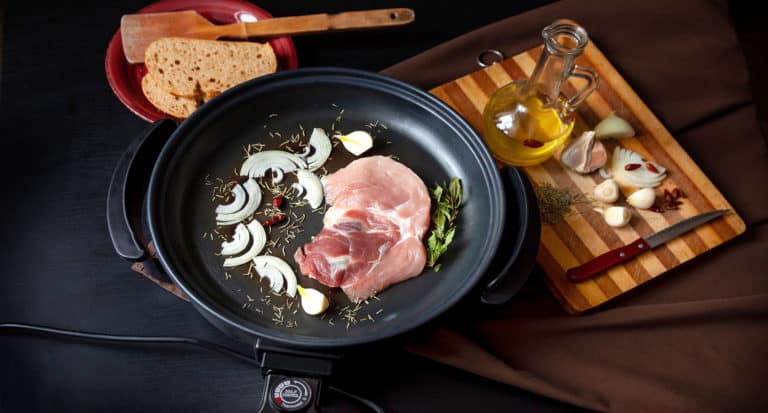If you are picking carbon steel vs. non-stick cookware for a showdown before purchasing, this article can give you the answer you want. It provides a detailed comparison between them to help you find the better choice that fits your desires.
Nowadays, carbon steel and non-stick cookware are common goods in every kitchen. If you are going to buy one of them, the comparison will be helpful to you. Let’s find out the differences between 2 household goods.
Essential Things About Carbon Steel And Non-Stick Cookware You Need To Know
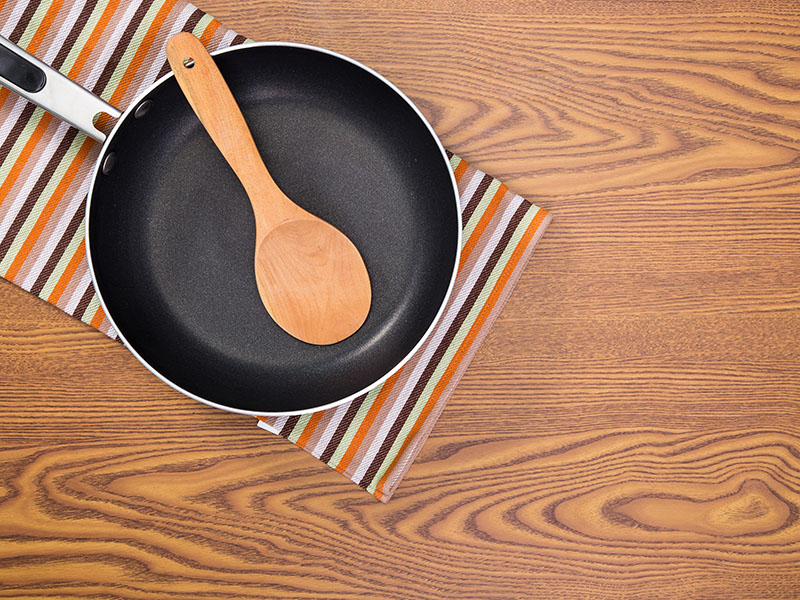
Before comparing carbon steel and non-stick cookware, it’s necessary to have an overview of information about 2 popular household appliances. Let’s explore the secrets behind them right now!
What Is Carbon Steel Cookware?
Carbon steel cookware is the perfect combination of the great features of cast iron and stainless steel cookware. It has cast iron’s non-stick properties and stainless steel’s high-cooking speed.
This common household product is made up of 99% iron and 1% carbon, with France being its home country. You can heat it at a temperature of more than 800°F or 1200°F (427°C or 649°C).
Thanks to its versatile cooking surfaces, you can put carbon steel in the oven or on the grill, stovetop, or open flame. Other plus points of this fantastic stuff are the high durability and lightweight.
Uncover the exciting facts about carbon steel cookware.
What Is Non-Stick Cookware?
Like carbon steel cookware, France is also the hometown of non-stick cookware. The invention of the non-stick pan occurred in 1954 when French engineer Gregoire came up with the non-stick cookware.
Non-stick cookware has a non-stick coating on the surface, preventing food from sticking to the pan. Normally, it is coated with polytetrafluoroethylene (PTFE) – Teflon, a synthetic chemical mix of fluorine and carbon atoms. (1)
Besides PTFE coating, you can find other non-stick products with ceramic, titanium-reinforced, or multi-layer PTFE coatings. Non-stick cookware appeared in the US in 1961 and has quickly become famous in other nations worldwide.
Discover a great story about the invention of the non-stick pan.
Overview Comparison Chart Of Carbon Steel And Non-Stick Cookware
Before blowing your mind with specific information about the differences between non-stick and carbon steel cookware, let’s check an overview comparison via its table below.
What Are The Differences Between Carbon Steel And Non-Stick Cookware?
Do you know the differences between carbon steel and non-stick cookware? If not, this section will be valuable to you. It’s time to find the answer to the question of “Carbon steel and non-stick: Which is better?”.
Price Range
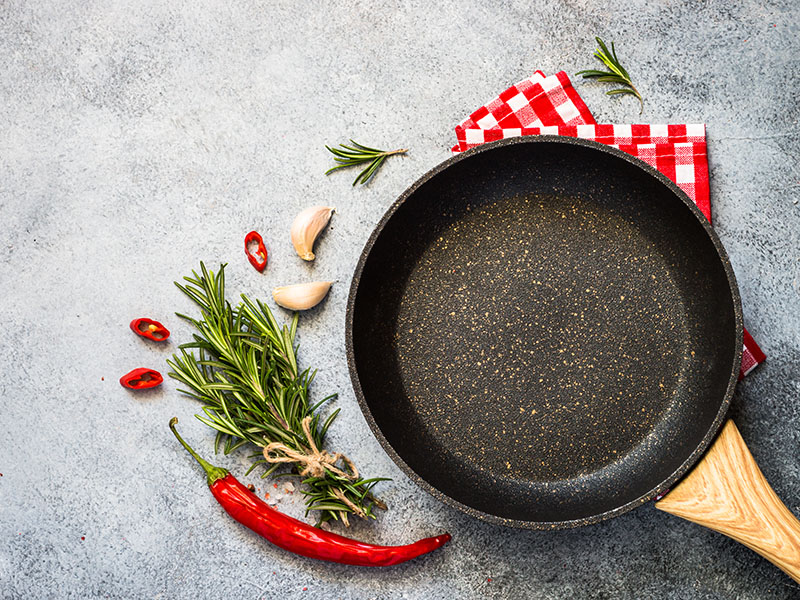
Compared to carbon steel cookware, the price of non-stick cookware is higher. Its prices vary depending on different brands, materials, and collections. Interestingly, carbon steel is even cheaper than copper or stainless steel cookware.
Typically, you only need to pay about 30 to 80 dollars to purchase carbon steel cookware, but it takes about 20 to over 100 dollars to buy a non-stick one. Therefore, carbon steel is better if you want to save money.
Popularity
Regarding popularity and availability, non-stick cookware is more famous than carbon steel. It is straightforward to purchase non-stick saucepans or frying pans via online websites and stores across the US.
Although carbon steel cookware is a newbie, it has been used by many chefs for a long time. After its birth, carbon steel has quickly gained popularity for years. However, finding a carbon steel pan is more difficult than a non-stick version. Sometimes, you just buy this product online.
Cooktop Compatibility
Carbon steel cookware is a great option for those prioritizing compatibility because it can work well with all cooktops. Furthermore, you can put it in the broiler, on a grill, or even over a campfire.
Alternatively, non-stick cookware is more limited regarding compatibility. Its PTFE coating may be damaged if you put it over an open flame or on a grill because of the high temperature.
If you have an aluminum-based pan for your non-stick pan, don’t put it on the induction burners since you may end up ruining it. In this case, it’s better to use steel-based non-stick cookware.
Heat Resistance
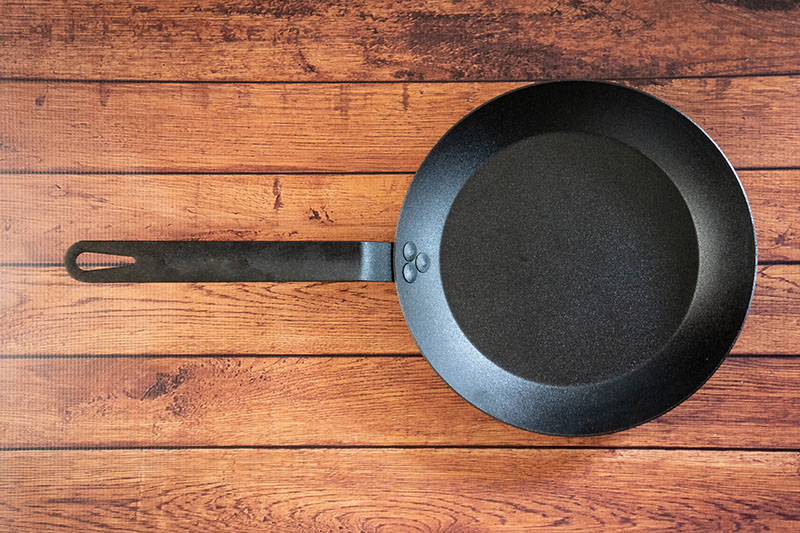
Non-stick kitchenware heat tolerance is much lower than carbon steel ones. Most non-stick cookware models can withstand temperatures from 400 to 500°F, while carbon steel pans can handle temperatures from 800 to more than 1200°F.
There will be no serious problems when you overheat carbon steel cookware. However, the PTFE coating will suffer severe damage if you overheat the non-stick pan in this case. Plus, you may inhale dangerous PTFE fumes with the appearance of microscopic carcinogens in this case.
Non-stick Property
Non-stick cookware is invented to prevent food from sticking to the pan, so it is an expert in this field. If the coating layer remains intact, you can easily flip fried eggs from the pan in the morning.
Food can be stuck on a carbon steel pan surface if you don’t season it carefully with oil or grease. It is essential to wash the cookware and scrub the wax layer on its surface before cooking.
Preservation And Maintenance
Maintenance and preservation of non-stick cookware are simpler than carbon steel pans because you don’t need to season them. Note, do not wash or scrape a non-stick pan with an abrasive sponge, cloth, brush, and metal utensils since they can damage your pan.
In contrast, it is more complicated to maintain carbon steel cookware because you must season and re-season it regularly with oil or butter after washing and drying it. In addition, you have to use many cleaning products and steps to clean carbon steel after cooking.
Design And Model
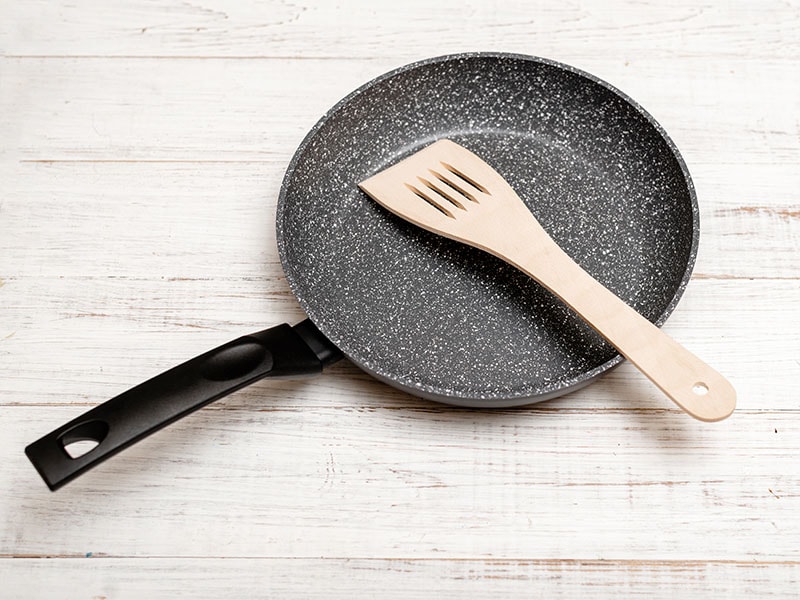
The design and color of non-stick cookware are more eye-catching than the carbon steel option. You can find non-stick products with black, dark gray, or copper-colored cooking surfaces at many stores or online websites.
On the other hand, the carbon steel pan’s design is simple, with a dark gray hue. Over time, the color will change into dark brown. In addition, carbon steel cookware’s surface is not as sleek as a non-stick pan.
Longevity
The durability of carbon steel is unquestionable, so you can see a carbon steel pan last in the kitchen for a long time. This upside results from the lack of a synthetic coating on its surface.
In contrast, durability is a weakness of non-stick cookware. Normally, a non-stick pan can last from 1 to 5 years. After a long time, the non-stick coating will no longer perform its function. If the situation is serious, you need to replace the non-stick pan.
To extend the longevity of non-stick cookware, you should not overheat or place kitchenware over it. Do not wash it with an abrasive sponge or stir food with metal utensils. Let the non-stick pan cool at room temperature before washing it with cold water.
Materials
Normally, the main composition of non-stick cookware is usually stainless steel, hard-anodized aluminum, or aluminum. The non-stick coating is made up of PTFE, ceramic, or titanium.
In terms of carbon steel, it contains 99% iron and 1% carbon. The appearance of carbon improves the durability of carbon steel cookware.
Reactivity
Compared to carbon steel cookware, non-stick is a better choice because there is no reaction between food and metal underneath. Therefore, it’s safe to cook a wide range of food on your non-stick pans.
Meanwhile, the food reactivity of carbon steel is high because of its 99% iron composition. When you put wine or acidic elements in a carbon steel pan, you can get food with a metallic flavor because the microscopic bits of iron will absorb into the food.
What Can You Cook?
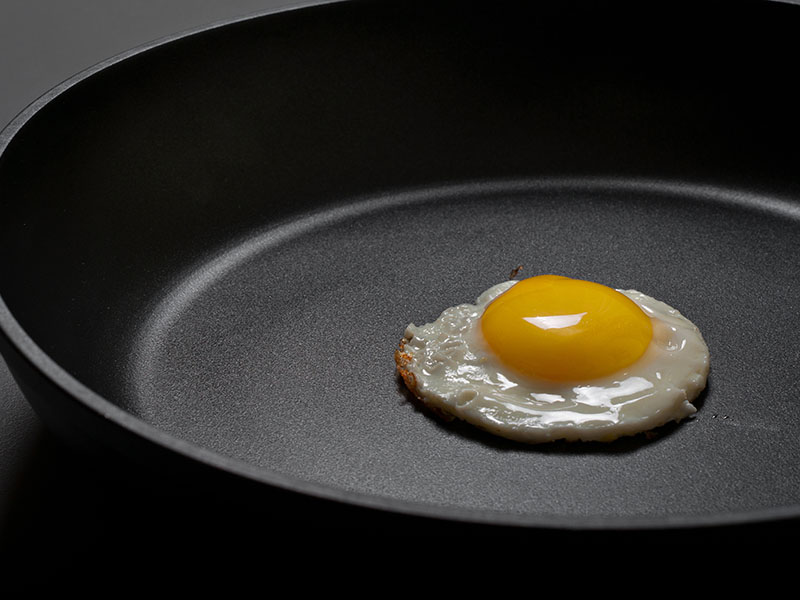
If you want to sear meat, chicken, steak, salmon, or char veggies, carbon steel is more suitable than non-stick cookware because it can withstand high heat better. A non-stick pan is a common choice for making sauteed dishes, omelets, fried fish, and other (low to medium heat) fried dishes.
Cooking Surface Of Carbon Steel And Non-Stick
To make cooking easier and smoother, manufacturers design a thin layer on the surfaces of carbon steel and non-stick cookware. The non-stick coating is an indispensable layer on every non-stick cookware, and it prevents food from sticking to the pan when cooking. Plus, you can cook food without oil.
Seasoning is the layer you can find on the surfaces of many carbon steel models. The role of this layer is to prevent food stickiness and the chemical reaction between metal and moisture that can make your cookware rust (2).
Discover what it’s like using non-stick and carbon steel cookware and discover their differences.
Famous Brands With Good Carbon Steel And Non-Stick Cookware
There are many famous brands providing incredible carbon steel and non-stick cookware. Here are some dominant suppliers you should visit if you want to buy high-quality non-stick and carbon steel cookware.
Anolon
Anolon started providing non-stick cookware to customers in 1986. Besides, you can find many great barware products at this store. Anolon X Sear Tech Aluminum Non-stick Frying Pan and Anolon Smart Stack Hard Anodized Non-Stick Cookware are popular choices here.
All-Clad
Another fantastic brand for non-stick cookware lovers is All-Clad. It features a high-quality hand-craft collection with frying pans, saute pans, skillets, and cookie sheets. This brand introduced these products to customers in 1971.
Opt for All-Clad E785SB64 HA1 Hard Anodized Non-Stick Cookware Set to create delicious and incredible meals for your family.
Matfer
This brand specializes in high-quality cookware, utensils, kitchen tools, and pastry equipment. Matfer is the paradise for carbon steel cookware, such as Matfer Bourgeat Black Carbon Steel Fry Pan or Matfer Bourgeat 62032 Black Carbon Steel Crepe Pan.
Lodge
Are you looking for good cast iron or carbon steel cookware? The wide collections of Lodge will give you many great options. You can be assured about their quality because Lodge is a long-standing brand with over 30 years of producing and selling amazing kitchen tools. One of the famous carbon steel items you can buy from Lodge are Lodge CRS 12 Carbon Steel Skillet and Lodge Manufacturing Company CRS12HH61 Carbon Steel Skillet.
FAQs
To boost your knowledge with other amazing information about carbon steel and non-stick cookware, the regularly asked questions will be valuable to you. Let’s check them right away.
Which Should You Select Between Carbon Steel And Non-Stick?
Do you prefer non-stick cookware rather than carbon steel pans? I hope you can fill your kitchen space with your favorite cookware after reading this article. If you find them suitable for you, let’s buy both if you want.
Many other people are looking for this comparison as well, so do not forget to share it on your social media accounts. In addition, if you know other differences, let’s write them in the comment section. Many thanks!
References
- “Polytetrafluoroethylene (PTFE, Aka Teflon®) – Safe Cosmetics.” Campaign for Safe Cosmetics.
- “Rust.” Wikipedia.




